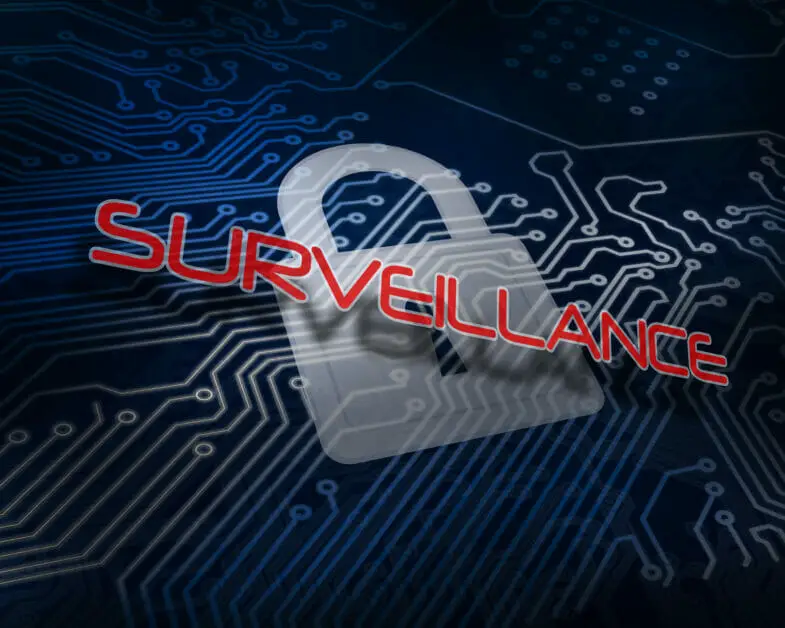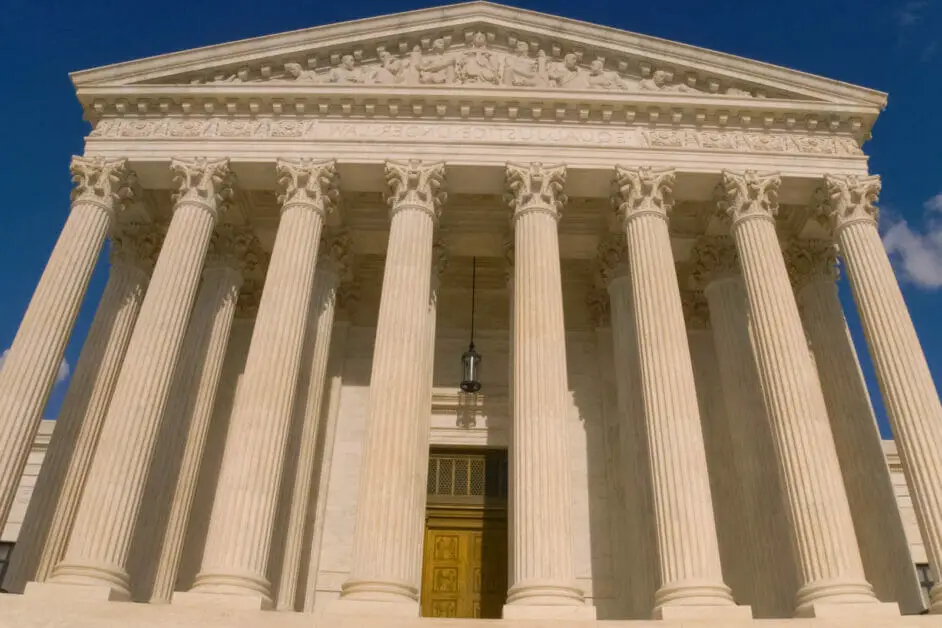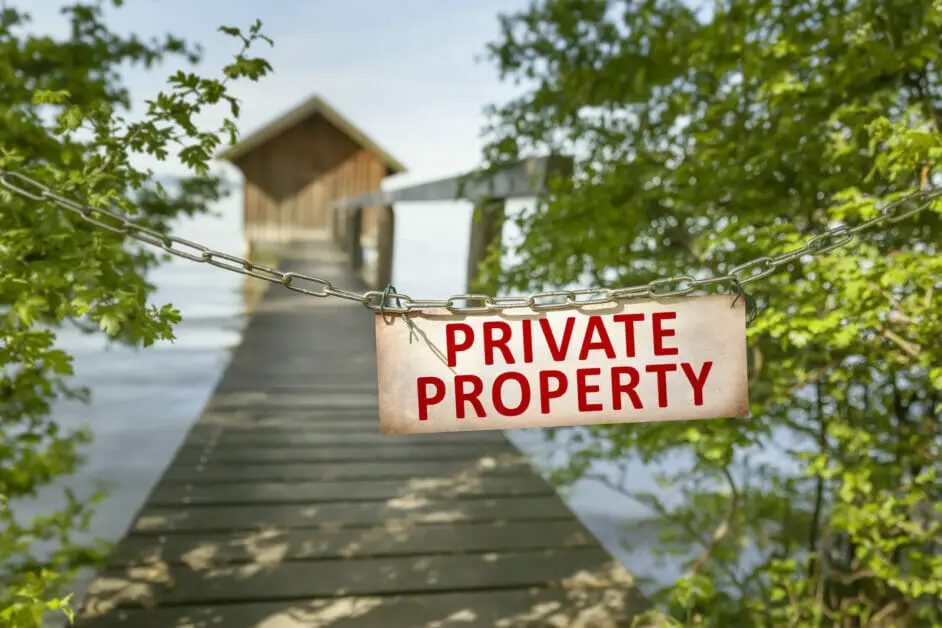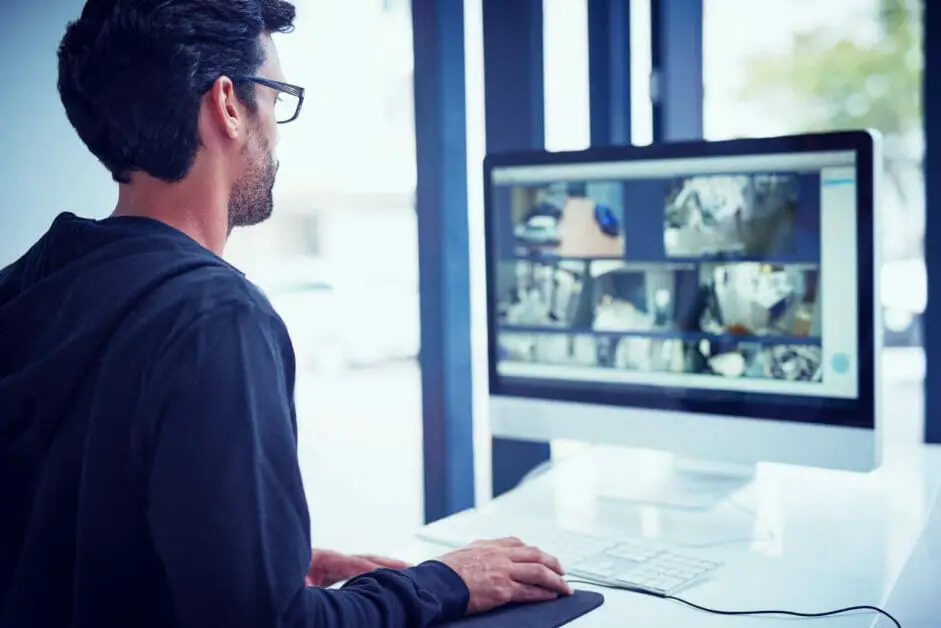Security cameras on government property are becoming increasingly common as technology improves and cities across the nation grapple with various challenges, including crime and public safety.
State governments increasingly utilize security cameras on government property for various purposes like crime deterrence, activity monitoring, and public resources protection. The cameras’ presence strikes a delicate balance between maintaining public safety and preserving privacy rights. While this may raise privacy concerns, public safety remains a priority.
As we dive deeper into this topic, we’ll discuss consent laws, expectations of privacy, and recent cases that illustrate the delicate balance between maintaining security and preserving the American value of personal freedom.
State Government and Surveillance

As someone always interested in how technology affects our lives, I’ve noticed that state governments increasingly use security cameras for surveillance purposes.
It’s a fascinating development, and I’d like to touch on some key aspects of this trend.
Government Property
These cameras serve various purposes, from discouraging crime to monitoring activity and protecting public resources from damage. This technology can play a major role in ensuring the safety and security of public spaces.
While some people may worry about potential privacy issues, it’s important to remember that public safety is a top priority for state governments.
There’s a delicate balance between privacy and security, but using cameras in public spaces can contribute significantly to creating a safer community.
Government Facilities
Now, let’s talk about the use of surveillance cameras in government facilities, another interesting aspect of this trend. Many facilities, like courthouses, public offices, and transportation hubs, see high traffic daily.

You can probably imagine the challenges that can arise in such busy environments.
Security cameras can provide valuable situational awareness to help state governments better manage their facilities. For instance, cameras can monitor entrances, helping staff identify who is coming and going.
They can also be instrumental in resolving disputes or incidents within these facilities.
While considering the state government’s use of surveillance cameras raises some valid concerns, it’s important to remember their potential benefits.
The ability to maintain a safer, more secure environment for the public seems like a pretty compelling reason for state governments to lean into this technology.
Privacy and Expectations
Public Places

Regarding security cameras in public places, there’s always a delicate balance between privacy and safety.
I’ve found that most of the time, people have a reasonable expectation of privacy only in areas where others can’t easily observe them.
So, in a public setting like a park, you’d expect to be seen by passersby, and the presence of security cameras shouldn’t be too concerning.
But it’s not just about what we can see. Even in these open spaces, there are limits to what can be done with the footage.
The key here is the purpose of collecting the recordings. Local governments use security cameras on their properties mainly to discourage crime, monitor activity, and protect public resources.
They have a lot of leeway in doing so, but they must abide by rules that protect citizens’ rights.
Private Property

The situation changes dramatically on private property. Believe it or not, some government officials have been known to set up cameras on private land without a warrant. This is where we start treading on thin ice!
Invasion of privacy becomes a real concern in these cases. It gets pretty murky when law enforcement or other government agencies set up cameras without the property owner’s knowledge or consent.
Although some century-old court precedent allows for it, using modern, sophisticated cameras that spy 24/7 violates our basic rights. It’s crucial to respect that fine line between security and privacy.
I believe that transparency, clear regulations, and open communication between citizens, government agencies, and property owners are our best tools to create trust and maintain the balance we all need.
So, let’s keep the conversation going.
Security Cameras’ Roles in Government Facilities
| Facility Type | Role of Security Cameras | Examples of Challenges Addressed |
|---|---|---|
| Courthouses | Monitor entrances, resolve disputes | Crowd management, illegal activities |
| Public Offices | Monitor entrances, track visitor activity | Unauthorized access, public disturbances |
| Transportation Hubs | Monitor crowd movements, identify potential threats | Crowd management, terrorism threats |
Legal Framework
Montana and Vermont
While there isn’t much information about Montana, Vermont has specific privacy laws regulating video surveillance in public and private settings.
You must be familiar with consent laws if you’re interested in federal laws that may impact security camera usage.
I found a source stating that on a national level, it’s legal to record a conversation if at least one person’s consent is obtained, called the “one-party consent” law. This law could apply to video or audio recordings in government buildings.
California and Florida
In California, I know that state law requires visible signage to be placed around an area with security cameras installed.
On the other hand, Florida takes a more lenient approach, with no specific statutes governing the use of security cameras in government buildings. However, both states still adhere to federal wiretap laws regarding audio recordings.
Massachusetts and Maine
The states of Massachusetts and Maine enforce wiretap statutes that are stricter than the federal one-party consent law.
In these states, two-party consent is necessary for any audio recording. Placing a security camera with audio recording capabilities in government buildings could require obtaining consent from both parties involved in the conversation.
Michigan and Pennsylvania
Like Massachusetts and Maine, Michigan and Pennsylvania require two-party consent for audio recordings.
Any violation of these wiretap laws could lead to criminal charges. This may affect how security cameras are utilized in government buildings, especially if audio recording is involved.
Kansas
In Kansas, I learned that the law requires one-party consent for audio recordings, which applies to telephone and in-person conversations.
This means that if a security camera with audio recording capabilities is placed in a government building, the consent of just one party is required.
Keeping everything friendly and straightforward, we’ve covered the legal framework of placing security cameras in government buildings in various states.
Rules vary from state to state but often revolve around consent laws, audio recording requirements, and general privacy regulations.
Stay informed and current with local regulations if you place or maintain security cameras in government buildings.
Security Footage Retention and Access
As I’ve been exploring the world of state government security cameras, I found that the retention and access to security footage is an important aspect worth discussing.
Here’s what I’ve discovered about handling videos, recordings, and resources.
One of the key elements of maintaining security footage is developing a proper records retention schedule. Different entities have their guidelines like Massachusetts maintaining a searchable database for state, county, city, and town records retention.
With these retention guidelines, governments can balance privacy interests while ensuring that essential documentation is available when needed. In my experience, a comprehensive retention policy is crucial to avoid potential legal issues or conflicts.
In addition to retention, access to security footage is an area of interest. Establishing a clear policy on who can access recordings and under what circumstances is important.
For instance, some local governments employ security cameras on government property to discourage crime, monitor activity, and protect public resources from damage. But keeping this footage accessible to authorized personnel ensures transparency and accountability.
So, how does an oversight board tie into this process? The role of a board is to guide government agencies on the appropriate use, handling, and storage of security footage.
This includes creating policies on how long to keep the recordings and how they’ll be deleted or archived once they’ve reached the end of their retention period.
A well-functioning board elevates the overall effectiveness of a government’s security camera system.
References
Organizations:
- Security Industry Association (SIA). https://www.securityindustry.org/
Books:
- “The Future of Privacy” by Reg Whitaker
- “The End of Privacy: How Total Surveillance Is Becoming a Reality” by Reg Whitaker
- “The Digital Person: Technology and Privacy in the Information Age” by Daniel J. Solove
Websites:
- Google Scholar. https://scholar.google.com/
- Westlaw. https://legal.thomsonreuters.com/en/westlaw
- Wired. https://www.wired.com/
- The Verge. https://www.theverge.com/

